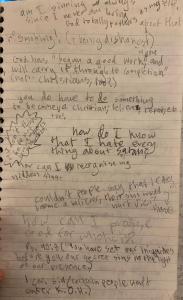Much as I enjoy landscape painting, my favorite subjects are animals, especially wildlife, and, more than anything else, I love sketching them from life, when I can observe their behavior as I capture them in my sketchbook. It’s not easy to sketch live animals unless they’re sleeping, but that’s a challenge I enjoy. I tend to have many partially done sketches on a page and may or may not complete any, but those are some of my favorite sketchbook pages to look back at. Even looking at sketches from years ago, I can almost always remember the specific animals and their actions.
While I prefer to sketch wildlife in the wild, I appreciate the variety of species I can observe, learn about, and sketch at a well-run zoo. Here is a sampling of my Zoo sketches, most from the Bronx Zoo, some from the Trevor Zoo that’s run by the Millbrook School here in Dutchess County, and some from the St. Louis Zoo. These are all sketches done from life, sometimes in freezing or raining conditions. Generally I leave them as I’ve done them at the zoo, but sometimes I add watercolor later. I don’t consider these great art, but they were great fun to do, and I look forward to more sketching at the Trevor Zoo and the Bronz Zoo now that Covid restrictions are easing.
The hymn “All Things Bright and Beautiful” by Cecil Francis Alexander is a favorite of mine that I think about often as I enjoy many aspects of God’s creation, and it seems a fitting conclusion to my A to Z Blogging posts.
All things bright and beautiful,
All creatures great and small,
All things wise and wonderful:
The Lord God made them all.
Each little flower that opens,
Each little bird that sings,
He made their glowing colors,
He made their tiny wings.
All things bright and beautiful,
All creatures great and small,
All things wise and wonderful:
The Lord God made them all.
The rich man in his castle,
The poor man at his gate,
He made them, high or lowly,
And ordered their estate.
All things bright and beautiful,
All creatures great and small,
All things wise and wonderful:
The Lord God made them all.
The purple headed mountains,
The river running by,
The sunset and the morning
That brightens up the sky.
All things bright and beautiful,
All creatures great and small,
All things wise and wonderful:
The Lord God made them all.
The cold wind in the winter,
The pleasant summer sun,
The ripe fruits in the garden,
He made them every one.
All things bright and beautiful,
All creatures great and small,
All things wise and wonderful:
The Lord God made them all.
The tall trees in the greenwood,
The meadows where we play,
The rushes by the water,
To gather every day.
All things bright and beautiful,
All creatures great and small,
All things wise and wonderful:
The Lord God made them all.
He gave us eyes to see them,
And lips that we might tell
How great is God Almighty,
Who has made all things well.
All things bright and beautiful,
All creatures great and small,
All things wise and wonderful:
The Lord God made them all.
A to Z April Blogging Z













































